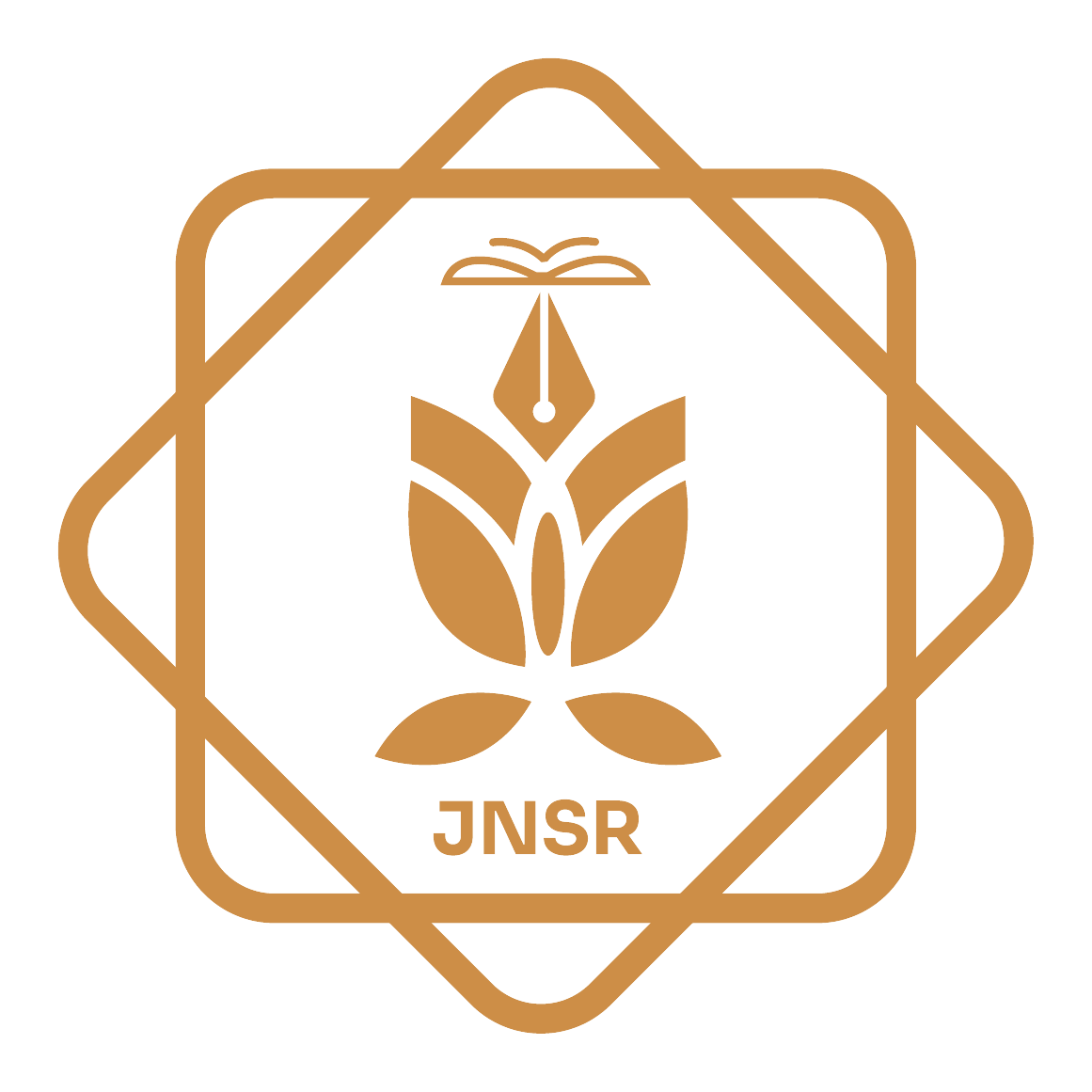Effect of Pure Corn Oil on Growth Performance of Japanese Quail (Coturnix Coturnix Japonica)
DOI:
https://doi.org/10.62810/jnsr.v2i1.32Keywords:
Feed Intake, Growth Performance, Japanese Qauil, Pure Corn OilAbstract
In recent years, consecutive research has been conducted on the nutrient requirements of the quails to find an optimum and affordable legitimate growth promoter. Different types of vegetable oil have been tested so far. This study aimed to evaluate the effects of pure corn oil (PCO) on growth performance and live body weight gain in Japanese quails. A total of 80 four-day-old quail chicks were divided into two groups: control (20 checks) and experimental (60 checks). The experimental group was subdivided into three subgroups (G1, G2, and G3) of 20 chicks per group. All the control and experimental group chicks were fed a commercial grower quail diet in all three growth phases. Despite the commercial diet, the G1, G2, and G3 experimental groups were fed 1, 3, and 5% PCO, respectively. The values for live body weight did not significantly change after adding PCO to the quail’s diet. According to the study's findings, adding PCO to the commercial diet of Japanese quails in various amounts had no beneficial effects on feed consumption and growth rate. Additionally, it had an insignificant (p>0.05) detrimental impact on the growth performance of the quails compared to control groups. In conclusion, we can say that adding PCO to quail's commercial diet in the hot months of the year under Afghanistan's climate has no positive impact on growth and further slows down the rate of body weight gain.
Downloads
References
Abd El-Gawad, A. H., El-Daly, E. F., & El-Azeem, N. A. A. (2008). Alleviating the effect of some environmental stress factors on productive performance in Japanese Quail 1 . growth performance. World Journal of Agricultural Sciences, 4(5), 605–611. https://www.cabdirect.org/cabdirect/abstract/20113035624
Abdelhady, A., El-Faham, A., & Ali, N. (2018). Effect of Different Dietary Fat Sources on Productive Performance and Breast Meat Quality in Japanese Quails. Egyptian Journal of Nutrition and Feeds, 21(1), 269–278. https://doi.org/10.21608/ejnf.2018.75465 DOI: https://doi.org/10.21608/ejnf.2018.75465
Akarikiya, S. A., Dei, H. K., & Mohammed, A. (2022). Quail Production Systems, Prospects and Constraints in Ghana. Asia Pacific Journal of Sustainable Agriculture Food and Energy (APJSAFE), 10(2), 55–68. https://ojs.bakrie.ac.id/index.php/APJSAFE DOI: https://doi.org/10.36782/apjsafe.v10i2.173
Akram, M., Hussain, J., Ahmad, S., Rehman, A., Lohani, F., Munir, A., & Amjad, R. (2014). Comparative study on production performance, egg geometry, quality, and hatching traits in four close-bred stocks of Japanese quail. Journal of Livestock Production, 1(3), 13–18. https://doi.org/10.14196/jlp.v1i1.66
Al-Daraji, H. J., Al-Mashadani, H. A., Al-Hayani, W. K., Mirza, H. A., & Al-Hassani, A. S. (2010). Effect of dietary supplementation with different oils on productive and reproductive performance of quail. International Journal of Poultry Science, 9(5), 429–435. https://doi.org/10.3923/ijps.2010.429.435 DOI: https://doi.org/10.3923/ijps.2010.429.435
Alagawany, M., Nasr, M., Abdulaziz Al-Abdullatif, Alhotan, R. A., Azzam, M. M., & Reda, F. M. (2020). Impact of dietary cold-pressed chia oil on growth, blood chemistry, hematology, immunity and antioxidant status of growing Japanese quail. Italian Journal of Animal Science, 19(1), 896–904. https://doi.org/10.1080/1828051X.2020.1807420 DOI: https://doi.org/10.1080/1828051X.2020.1807420
Altine, S., Sabo, M. N., Muhammad, N., Abubakar, A., & Saulawa, L. A. (2016). Basic nutrient requirements of the domestic quails under tropical conditions : A review. World Scientific News, 49(2), 223–235. www.worldscientificnews.com
Arunrao, K. V., Kannan, D., Amutha, R., Thiruvenkadan, A. K., & Yakubu, A. (2023). Production performance of four lines of Japanese quail reared under tropical climatic conditions of Tamil Nadu, India. Frontiers in Genetics, 14(April). https://doi.org/10.3389/fgene.2023.1128944 DOI: https://doi.org/10.3389/fgene.2023.1128944
Badawi, Y. (2017). Effect of Housing System on Japanese Quail Performance. Journal of Animal and Poultry Production, 8(12), 483–490. https://doi.org/10.21608/jappmu.2017.46068 DOI: https://doi.org/10.21608/jappmu.2017.46068
Badiri, R., & Saber, S. N. (2016). Effects of Dietary Oregano Essential Oil on Growth Performance, Carcass Parameters and Some Blood Parameters in Japanese Male Quail. International Journal of Pure & Applied Bioscience, 4(5), 17–22. https://doi.org/10.18782/2320-7051.2397 DOI: https://doi.org/10.18782/2320-7051.2397
Chardigny, J., Walrand, S., Chardigny, J., & Walrand, S. (2016). Plant protein for food : opportunities and bottlenecks. OCL Oilseeds and Fats Crops and Lipids, 23(4), 6. https://doi.org/10.1051/ocl/2016019 DOI: https://doi.org/10.1051/ocl/2016019
Dehghani, N., Afsharmanesh, M., Salarmoini, M., Ebrahimnejad, H., & Bitaraf, A. (2018). Effect of pennyroyal, savory, and thyme essential oils on Japanese quail physiology. Heliyon, 4(10), e00881. https://doi.org/10.1016/j.heliyon.2018.e00881 DOI: https://doi.org/10.1016/j.heliyon.2018.e00881
Delgado, C. L. (2003). Rising Consumption of Meat and Milk in Developing Countries Has Created a New Food Revolution. J. Nutr, 133(February), 3907–3910. https://academic.oup.com/jn/article/133/11/3907S/4818041?login=true DOI: https://doi.org/10.1093/jn/133.11.3907S
Ding, Y., Bu, X., Zhang, N., Li, L., & Zou, X. (2016). Effects of metabolizable energy and crude protein levels on laying performance, egg quality and serum biochemical indices of Fengda-1 layers. Animal Nutrition, 2(2), 93–98. https://doi.org/10.1016/j.aninu.2016.03.006 DOI: https://doi.org/10.1016/j.aninu.2016.03.006
Donaldson, J., Pillay, K., Madziva, M. T., & Erlwanger, K. H. (2015). The effect of different high-fat diets on erythrocyte osmotic fragility, growth performance and serum lipid concentrations in male, Japanese quail (Coturnix coturnix japonica). Journal of Animal Physiology and Animal Nutrition, 99(2), 281–289. https://doi.org/10.1111/jpn.12250 DOI: https://doi.org/10.1111/jpn.12250
Dowarah, R., & Sethi, A. P. S. (2014). Various dietary levels of protein and energy interaction on growth performance of white plumage japanese quails. Veterinary World, 7(6), 398–402. https://doi.org/10.14202/vetworld.2014.398-402 DOI: https://doi.org/10.14202/vetworld.2014.398-402
Dupont, J., White, P. J., Carpenter, M. P., Schaefer, E. J., Meydani, S. N., Elson, C. E., Woods, M., & Gorbach, S. L. (1990). Food uses and health effects of corn oil. Journal of the American College of Nutrition, 9(5), 438–470. https://doi.org/10.1080/07315724.1990.10720403 DOI: https://doi.org/10.1080/07315724.1990.10720403
Fussell, M., Contillo, A., Druehl, H., & Rodriguez, N. R. (2021). Essential amino acid density: Differences in animal- And plant-based dietary patterns designed for older women. Nutrition Today, 56(2), 70–75. https://doi.org/10.1097/NT.0000000000000466 DOI: https://doi.org/10.1097/NT.0000000000000466
Genchev, A., Mihaylova, G., Ribarski, S., Pavlov, A., & Kabakchiev, M. (2008). Meat Quality and Composition in Japanese Quails. Trakia Journal of Sciences, 66(4), 72–82. http://www.uni-sz.bg
Gorissen, S. H. M., Crombag, J. J. R., Senden, J. M. G., Waterval, W. A. H., Bierau, J., Verdijk, L. B., & van Loon, L. J. C. (2018). Protein content and amino acid composition of commercially available plant-based protein isolates. Amino Acids, 50(12), 1685–1695. https://doi.org/10.1007/s00726-018-2640-5 DOI: https://doi.org/10.1007/s00726-018-2640-5
Grigg, D. (1995). The pattern of world protein consumption. Geoforum, 26(1), 1–17. https://doi.org/10.1016/0016-7185(94)00020-8 DOI: https://doi.org/10.1016/0016-7185(94)00020-8
Ha, E., & Zemel, M. B. (2003). Functional properties of whey, whey components, and essential amino acids: Mechanisms underlying health benefits for active people (Review). Journal of Nutritional Biochemistry, 14(5), 251–258. https://doi.org/10.1016/S0955-2863(03)00030-5 DOI: https://doi.org/10.1016/S0955-2863(03)00030-5
Haqani, M. I., Nakano, M., Nagano, A. J., Nakamura, Y., & Tsudzuki, M. (2023). Association analysis of production traits of Japanese quail (Coturnix japonica) using restriction-site associated DNA sequencing. Scientific Reports, 13(1), 1–17. https://doi.org/10.1038/s41598-023-48293-0 DOI: https://doi.org/10.1038/s41598-023-48293-0
Henchion, M., Hayes, M., Mullen, A. M., Fenelon, M., & Tiwari, B. (2017). Future protein supply and demand: Strategies and factors influencing a sustainable equilibrium. Foods, 6(53), 1–21. https://doi.org/10.3390/foods6070053 DOI: https://doi.org/10.3390/foods6070053
Herve, T., Raphaël, K. J., Ferdinand, N., Laurine Vitrice, F. T., Gaye, A., Outman, M. M., & Willy Marvel, N. M. (2018). Growth performance, serum biochemical profile, oxidative status, and fertility traits in male Japanese quail fed on Ginger (Zingiber officinale, Roscoe) essential oil. Veterinary Medicine International, 1–8. https://doi.org/10.1155/2018/7682060 DOI: https://doi.org/10.1155/2018/7682060
Jatoi, A. S., Mehmood, S., Hussain, J., Ishaq, H. M., Abbas, Y., And, & Akram, M. (2015). Comparison of Six-Week Growth Performance in Four Different Strains of Japanese Quail (Coturnix coturnix japonica). Sarhad Journal of Agriculture, 31(1), 59–64. https://www.researchgate.net/publication/273759906%0AComparison
Jeke, A., Phiri, C., Chitiindingu, K., & Taru, P. (2018a). Nutritional compositions of Japanese quail (Coturnix coturnix japonica) breed lines raised on a basal poultry ration under farm conditions in Ruwa, Zimbabwe. Cogent Food and Agriculture, 4(1), 2–10. https://doi.org/10.1080/23311932.2018.1473009 DOI: https://doi.org/10.1080/23311932.2018.1473009
Jeke, A., Phiri, C., Chitindingu, K., & Taru, P. (2018b). Ethnomedicinal use and pharmacological potential of Japanese quail (Coturnix coturnix japonica) birds` meat and eggs, and its potential implications on wild quail conservation in Zimbabwe: A review. Cogent Food and Agriculture, 4(1), 1–12. https://doi.org/10.1080/23311932.2018.1507305 DOI: https://doi.org/10.1080/23311932.2018.1507305
Kårlund, A., Gómez-Gallego, C., Turpeinen, A. M., Palo-Oja, O. M., El-Nezami, H., & Kolehmainen, M. (2019). Protein supplements and their relation with nutrition, microbiota composition and health: Is more protein always better for sportspeople? Nutrients, 11(4), 1–19. https://doi.org/10.3390/nu11040829 DOI: https://doi.org/10.3390/nu11040829
Khaksar, V., van Krimpen, M., Hashemipour, H., & Pilevar, M. (2012). Effects of thyme essential oil on performance, some blood parameters and ileal microflora of Japanese quail. Journal of Poultry Science, 49(2), 106–110. https://doi.org/10.2141/jpsa.011089 DOI: https://doi.org/10.2141/jpsa.011089
Lassaletta, L., Billen, G., Garnier, J., Bouwman, L., Velazquez, E., Mueller, N. D., & Gerber, J. S. (2016). Nitrogen use in the global food system: Past trends and future trajectories of agronomic performance, pollution, trade, and dietary demand. Environmental Research Letters, 11(9), 095007. https://doi.org/10.1088/1748-9326/11/9/095007 DOI: https://doi.org/10.1088/1748-9326/11/9/095007
Lim, M. T., Pan, B. J., Toh, D. W. K., Sutanto, C. N., & Kim, J. E. (2021). Animal protein versus plant protein in supporting lean mass and muscle strength: A systematic review and meta-analysis of randomized controlled trials. Nutrients, 13(2), 1–18. https://doi.org/10.3390/nu13020661 DOI: https://doi.org/10.3390/nu13020661
Lokapirnasari, W. P., Dewi, A. R., Fathinah, A., Hidanah, S., Harijani, N., Soeharsono, Karimah, B., & Andriani, A. D. (2017). Effect of probiotic supplementation on organic feed to alternative antibiotic growth promoter on production performance and economics analysis of quail. Veterinary World, 10(12), 1508–1514. https://doi.org/10.14202/vetworld.2017.1508-1514 DOI: https://doi.org/10.14202/vetworld.2017.1508-1514
Mahmood, M., Rahman, A., Saima, Akram, M., Pasha, T. N., & Jabbar, M. A. (2014). Effect of dietary energy levels on growth performance and feed cost analysis in Japanese quail. Pakistan Journal of Zoology, 46(5), 1357–1362. https://www.researchgate.net/publication/286902816_Effect_of_Dietary_Energy_Levels_on_Growth_Performance_and_Feed_Cost_Analysis_in_Japanese_Quail
Minvielle, F. (2004). The future of Japanese quail for research and production. World’s Poultry Science Journal, 60(4), 500–507. https://doi.org/10.1079/WPS200433 DOI: https://doi.org/10.1079/WPS200433
Mnisi, C. M., & Mlambo, V. (2017). Growth performance, haematology, serum biochemistry and meat quality characteristics of Japanese quail (Coturnix coturnix japonica) fed canola meal-based diets. Animal Nutrition, 4(1), 1–7. https://doi.org/10.1016/j.aninu.2017.08.011 DOI: https://doi.org/10.1016/j.aninu.2017.08.011
Mousa, S. A., Abdel-Raheem, S. M., Abdel-Raheem, H. A., & Sadeek, A. L. S. (2017). Effect of dietary fat sources and antioxidant types on growth performance and carcass quality of Japanese quails. International Journal of Poultry Science, 16(11), 443–450. https://doi.org/10.3923/ijps.2017.443.450 DOI: https://doi.org/10.3923/ijps.2017.443.450
Odunsi, A. A., Rotimi, A. A., & Amao, E. A. (2007). Effect of Different Vegetable Protein Sources on Growth and Laying Performance of Japanese Quails (Coturnix Coturnix Japonica) in a Derived Savannah Zone of Nigeria. World Applied Sciences Journal, 3(5), 567–571. https://www.researchgate.net/publication/239767803
Post, M. J., & Hocquette, J. F. (2017). New Sources of Animal Proteins: Cultured Meat. In New Aspects of Meat Quality. Elsevier Ltd. https://doi.org/10.1016/B978-0-08-100593-4/00017-5 DOI: https://doi.org/10.1016/B978-0-08-100593-4.00017-5
Rahman, A. N. M. A., Hoque, M. N., Talukder, A. K., & Das, Z. C. (2016). A survey of Japanese quail (Coturnix coturnix japonica) farming in selected areas of Bangladesh. Veterinary World, 9(9), 940–947. https://doi.org/10.14202/vetworld.2016.940-947 DOI: https://doi.org/10.14202/vetworld.2016.940-947
Reda, F. M., El-Kholy, M. S., Abd El-Hack, M. E., Taha, A. E., Othman, S. I., Allam, A. A., & Alagawany, M. (2020). Does the use of different oil sources in quail diets impact their productive and reproductive performance, egg quality, and blood constituents? Poultry Science, 99(7), 3511–3518. https://doi.org/10.1016/j.psj.2020.03.054 DOI: https://doi.org/10.1016/j.psj.2020.03.054
Shoemaker, S. (2019). Healthline. https://www.healthline.com/nutrition/canola-vs-olive-oil#nutrition
Shunthwal, J., Sheoran, N., Promila, Vinus, & Sihag, S. (2017). Effect of Linseed oil supplementation on Hematological Parameters and Economics of Feeding in Broiler Chicks. International Journal of Pure & Applied Bioscience, 5(5), 1258–1265. https://doi.org/10.18782/2320-7051.5943 DOI: https://doi.org/10.18782/2320-7051.5943
Singh, P. (2019). Physicochemical characterization, fatty acid in Corn Seed Oil using GC-FID method. International Journal of Chemical Research and Development, 1(1), 1–4. https://www.researchgate.net/publication/355166124_Physicochemical_characterization_fatty_acid_in_Corn_Seed_Oil_using_GC-FID_method DOI: https://doi.org/10.33545/26646552.2019.v1.i1a.1
Sudhakararao, G., priyadarsini, K. A., Kiran, G., Karunakar, P., & Chegu, K. (2019). Physiological Role of Proteins and their Functions in the Human Body. International Journal of Pharma Research and Health Sciences, 7(1), 2874–2878. https://doi.org/10.21276/ijprhs.2019.01.02 DOI: https://doi.org/10.21276/ijprhs.2019.01.02
Tomé, D. (2013). Digestibility issues of vegetable versus animal proteins: Protein and amino acid requirements-functional aspects. Food and Nutrition Bulletin, 34(2), 272–274. https://doi.org/10.1177/156482651303400225 DOI: https://doi.org/10.1177/156482651303400225
Vargas-Sánchez, R. D., Ibarra-Arias, F. J., del Mar Torres-Martínez, B., Sánchez-Escalante, A., & Torrescano-Urrutia, G. R. (2019). Use of natural ingredients in Japanese quail diet and their effect on carcass and meat quality — A review. Asian-Australasian Journal of Animal Sciences, 32(11), 1641–1656. https://doi.org/10.5713/ajas.18.0800 DOI: https://doi.org/10.5713/ajas.18.0800
Vtlchez, C., Touchburn, S. P., Chavez, E. R., & Chan, C. W. (1990). The Influence of Supplemental Corn Oil and Free Fatty Acids on the Reproductive Performance of Japanese Quail ( Coturnix coturnix japonica ) Japanese quail have become an important laboratory animal because of their small body size sexual maturity in 6. Poultry Science, 69(9), 1533–1538. https://www.sciencedirect.com/science/article/pii/S0032579119328986 DOI: https://doi.org/10.3382/ps.0691533
Downloads
Published
How to Cite
Issue
Section
License
Copyright (c) 2024 Mohammad Sangary, Ghulam Haidar Olfat, Mohammad Asif Safi, Abdul Jawid Neyazi

This work is licensed under a Creative Commons Attribution-NonCommercial 4.0 International License.



























